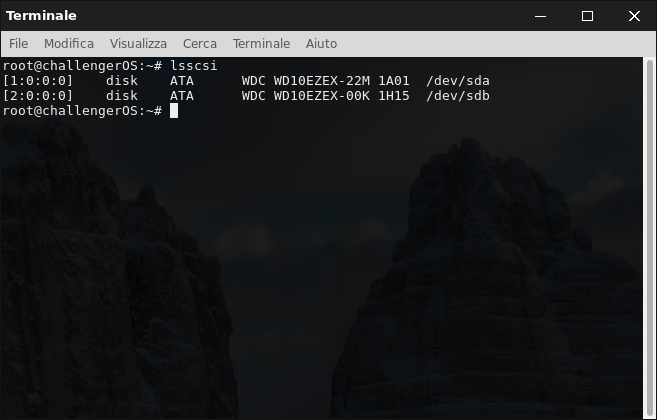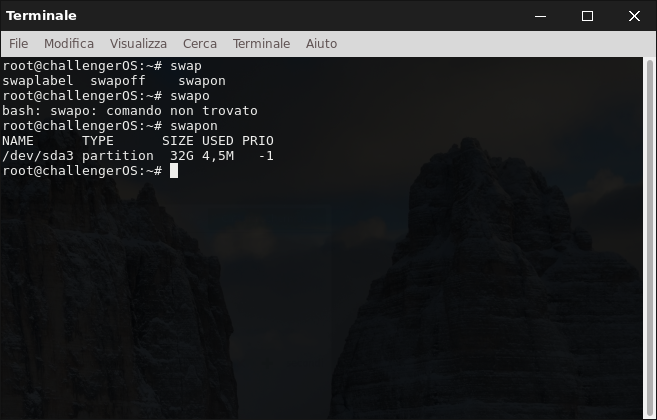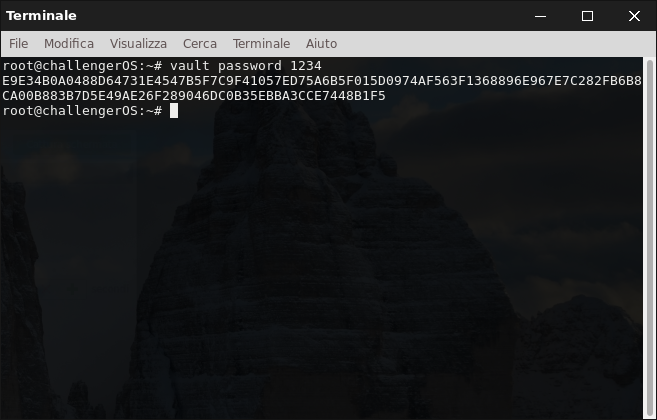ChallengerOS Customization¶
Installing Additional Software¶
ChallengerOS supports navively all Slackware Packages .TGZ .TXZ.
To install any package in the live environment just use typical command installpkg packagename
To convert a package to ChallengerOS Format use command tgz2sfs packagename
Adding Package to system¶
To make any package permanent in your ChallengerOS locate INSTALL disk on file manager.
Copy ChallengerOS sfs package into INSTALL FOLDER.
Reboot your Computer.
Customizing ChallengerOS Partitions after install¶
Warning
ChallengerOS tweaks need confidence with terminal commands and linux operating system.
Even if ChallengerOS Partition Layout is Fixed, you can customize system adding data disks and swap disks or partitions.
Adding Root data Disk to system¶
if Default Root Partition must to be pointed on a different Disk Device, you can customize system changing the partition uuid located in file /live/media/boot/root
- Add the Physical Device to System ( SATA / SAS / USB or any other)
- Locate The Device Identification ( from terminal
lsscsi) - Create the Partition Scheme and Format Partition
- Locate Partition UUID with command (
blkid | grep /dev/yourdeviceid) - Copy and Paste UUID printed Value into file
/live/media/boot/root - Reboot Computer
Note
ChallengerOS needs some configuration Files for root partition.
before rebooting after new root disk install you need to transfer manually some files for getting desktop work properly.
Hint
If ChallengerOS after system changes is unable to launch desktop properly, reboot computer in safe mode and apply required files or configuration changes.
Adding Swap Device Disk to system¶
if you need more SWAP space than the default one 32 GB, you can add to ChallengerOS a swap Disk ( one ssd as example )
This will raise consistently your virtual memory and performances.
- Add the Physical Device to System ( SATA / SATA SSD )
- Locate The Device Identification ( from terminal
lsscsi) - Create the Partition Scheme and Format Partition as SWAP using command (
mkswap) - Locate Partition UUID with command (
lsblk | grep /dev/yourdeviceid) - Copy and Paste UUID printed Value into file
/live/media/boot/swap - Reboot Computer
- After Reboot check SWAP Space with command
swapon


Configuring Encrypted Devices¶
ChallengerOS supports all Linux Default Encryption Standards and include all drivers to encrypt and protect your data .
Encrypting Disk with Challenger Vault¶
ChallengerOS default encryption is Plain Encryption with Vault Password Derivation Scheme.
ChallengerOS Vault Derivation System reduces dramatically chances of brute force attacks and dictionary attacks adding custom reiterations and changes to traditional derivation schemes.
